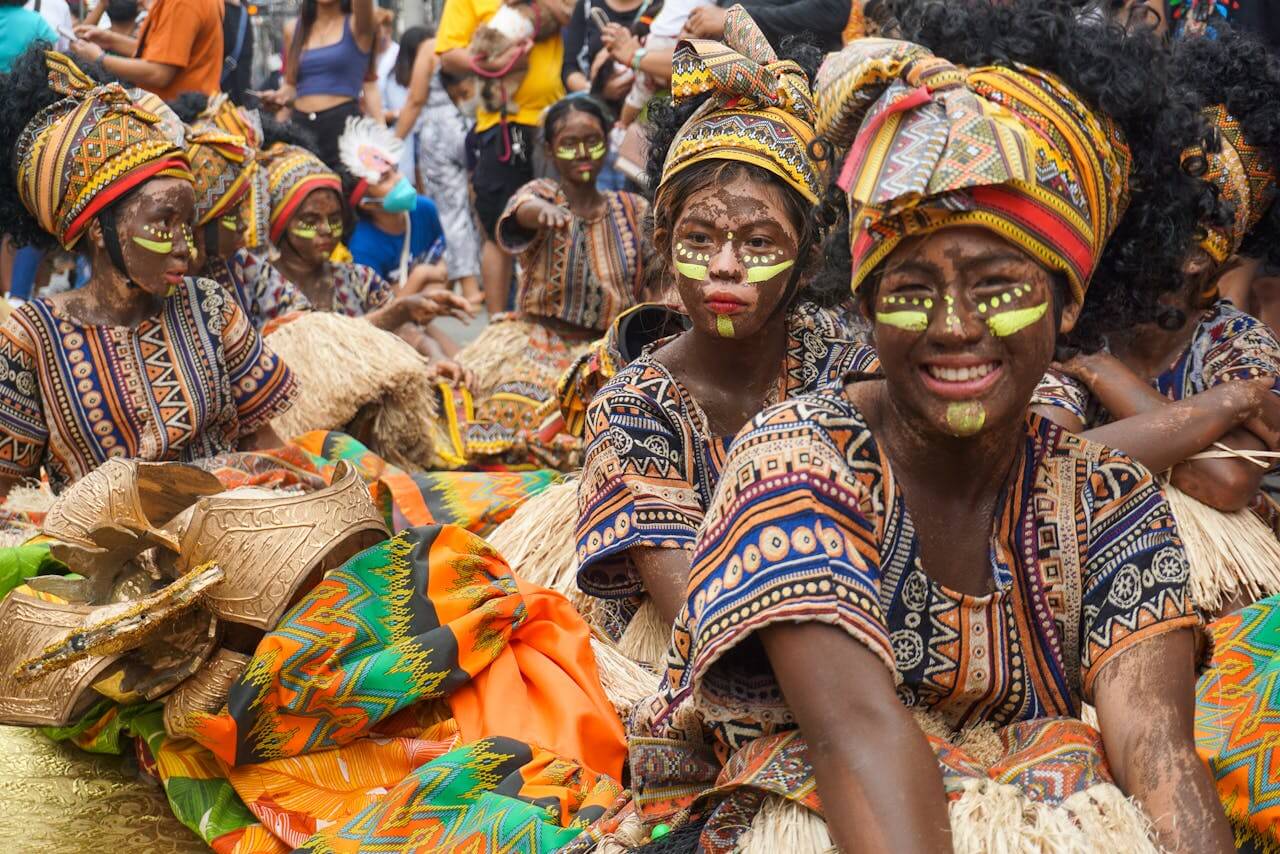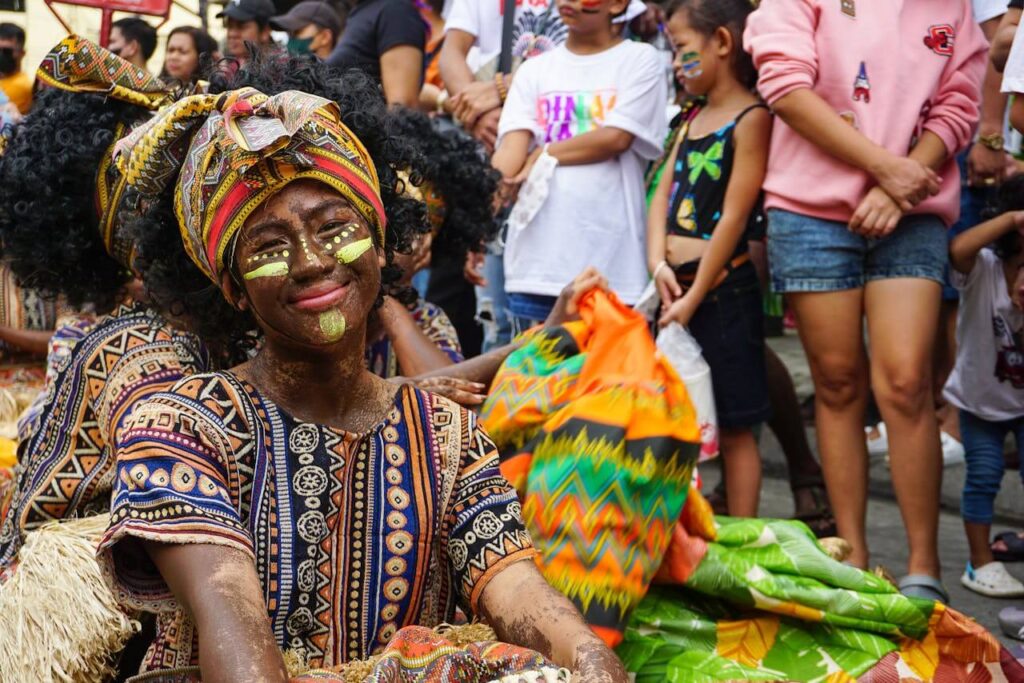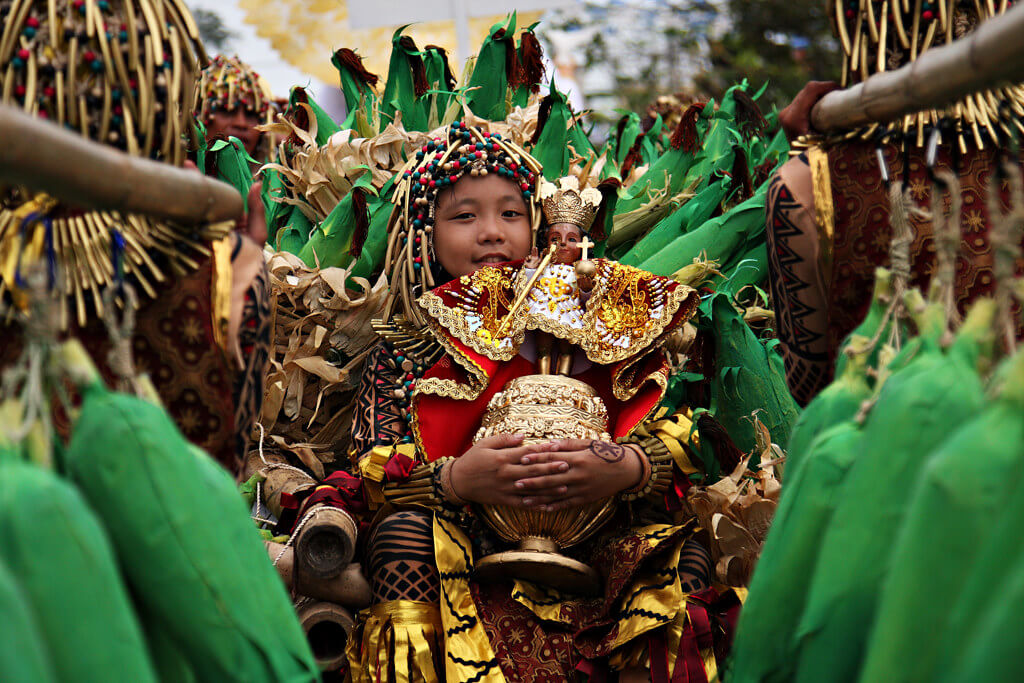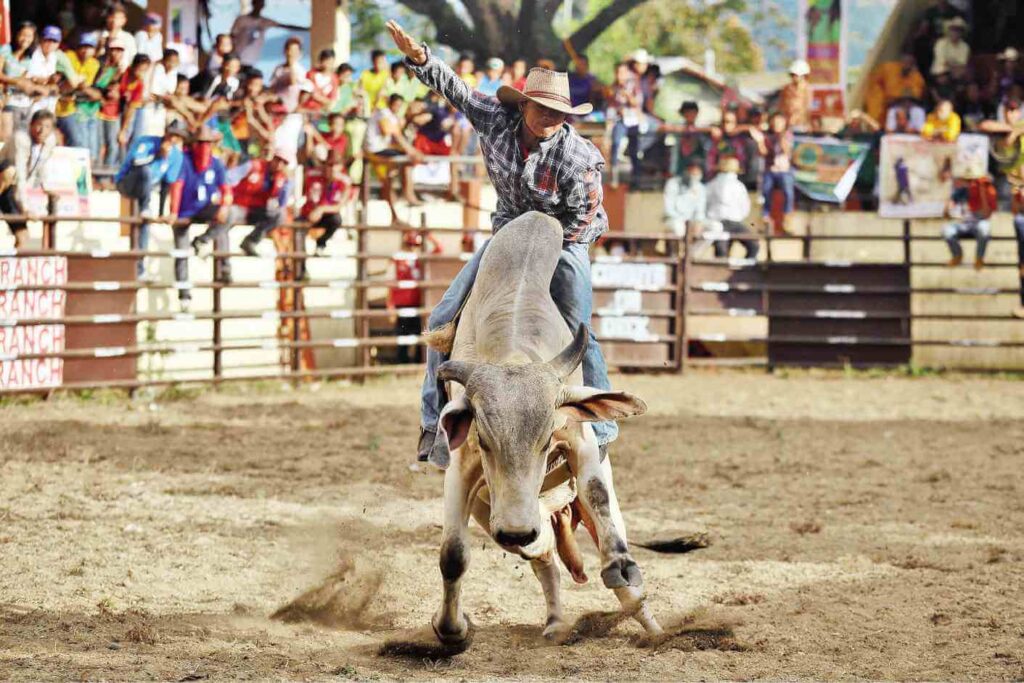The Cultural Significance
When it comes to the Ati-Atihan Festival, the costumes hold a deep cultural meaning. They are not just garments; they embody the identity, creativity, and resilience of the people.
Symbolism in Costumes
The costumes worn by participants in the Ati-Atihan Festival are rich in symbolism. Each element of the costume serves a purpose and tells a story.
- Feathers: In the festival, feathers symbolize respect for nature spirits. They are often used to accentuate the headpieces and garments, paying homage to the ancestral connections to the natural world.
- Beadwork: Beadwork found in many costumes represents unity and community bonds. The intricate patterns and designs in the beads narrate tales of ancestry and showcase the connection to heritage.
- Vibrant Colors: The bright hues such as red, yellow, green, and blue used in the costumes are more than eye-catching aesthetics. These colors are a tribute to ancient rituals and beliefs, each carrying its own significance. For instance, red symbolizes courage and bravery, while green represents the bounty of nature.
| Symbol | Meaning |
|---|---|
| Feathers | Respect for nature spirits |
| Beadwork | Unity and community bonds |
| Vibrant Colors | Ancient rituals and beliefs |
Evolution of Designs
The designs of Ati-Atihan festival costumes have evolved over time, reflecting both the preservation of tradition and the incorporation of modern influences.
-
Traditional Influences: Traditionally, Ati costumes were made from woven fabrics and natural elements. They were simple yet meaningful, designed to endure the rigorous activities of the festival. These traditional elements remain a foundation in today’s costumes.
-
Modern Interpretations: Modern interpretations of Ati-Atihan costumes incorporate new materials and techniques, bringing a fresh and contemporary vibe to the festival. Designers now use synthetic fabrics, modern dyes, and innovative crafting techniques to create costumes that are vibrant and durable. Digital patterns and designs also play a role in adding intricate details that would have been challenging to execute manually.
The evolution of these designs signifies a balance between honoring heritage and embracing innovation. For those interested in the historical context, read more about the Ati-Atihan festival history.
| Year | Traditional Materials | Modern Materials |
|---|---|---|
| 1900s | Woven fabrics, natural dyes | – |
| 2000s | Woven fabrics, natural dyes | Synthetic fabrics, modern dyes |
| Present | Woven fabrics, natural dyes | Synthetic fabrics, digital designs |
These costumes not only preserve heritage but also adapt to contemporary trends, making them a fascinating subject for anyone passionate about festivals in the Philippines. For more insights into the festival’s vibrant atmosphere, explore our section on Ati-Atihan festival music and Ati-Atihan festival dance.

Photo by Joel Garcia
Tradition and Modernity
Ati-Atihan Festival costumes are a vibrant tapestry of tradition and modernity, showcasing the rich cultural heritage of the Philippines. Let’s explore the traditional influences and modern interpretations of these stunning costumes.
Traditional Influences
Traditional Ati-Atihan garments are distinguished by their brilliant colors, elaborate designs, and cultural significance. Feathers, beads, and vibrant fabrics play a crucial role in these costumes, each symbolizing different aspects of unity and celebration.
- Feathers: Feathers in Ati-Atihan costumes symbolize respect for nature spirits. They are often used to adorn headdresses and other costume elements, connecting the wearers to the natural world.
- Beadwork: Beads represent unity and community bonds. Intricate beadwork is a hallmark of traditional Ati-Atihan costumes, reflecting the craftsmanship of artisans.
- Colors: The use of bright colors in the costumes pays homage to ancient rituals. Vibrant hues like red, yellow, green, and blue are commonly used, symbolizing joy, energy, and celebration.
The traditional garments are usually made from woven fabrics and are accentuated with natural materials like wood, shells, rooster feathers, bamboo, and tiger grass. These materials not only add to the visual appeal but also preserve the heritage and traditions of the Ati people, connecting wearers to their ancestors.
For more on the history and significance of Ati-Atihan Festival, visit our article on ati-atihan festival history.
Modern Interpretations
While traditional influences remain strong, modern interpretations of Ati-Atihan costumes have introduced exciting new elements. Innovation and creativity are at the forefront of these modern designs, blending cultural influences with contemporary fashion trends.
- Modern Materials: Today, costumes made of fabric are common and accepted in the festival. Designers often use synthetic materials for durability and comfort.
- Recycled Elements: Eco-friendly fashion is gaining popularity. Participants create costumes using recycled materials such as PET bottles, Yakult containers, plastic cups, old CDs, and plastic forks. This approach not only promotes sustainability but also showcases the creativity of the designers.
- Innovative Techniques: Modern costumes incorporate advanced techniques like laser cutting and 3D printing to achieve intricate designs. These state-of-the-art methods bring a new dimension to the costumes while maintaining their cultural relevance.
- Simple Materials: There is also a movement towards using simpler materials like coconut husks, dried banana leaves, and woven mats. These materials are readily available and eco-friendly, aligning with the festival’s theme of unity with nature.
| Element | Traditional Version | Modern Interpretation |
|---|---|---|
| Feathers | Rooster feathers | Synthetic feathers or none at all |
| Beadwork | Natural beads and shells | Plastic beads or recycled materials |
| Fabric Colors | Woven fabrics in bright colors | Synthetic or recycled fabrics, still colorful |
| Additional Materials | Wood, bamboo, tiger grass | PET bottles, plastic cups, CDs, plastic forks |
These modern interpretations ensure that Ati-Atihan Festival costumes continue to evolve while honoring their traditional roots. Learn more about the dance and music of Ati-Atihan Festival.
By embracing both tradition and modernity, the Ati-Atihan Festival costumes serve as a beautiful reminder of the Philippines’ rich cultural heritage and the ways in which it continues to thrive and adapt in contemporary times. For a deeper look into the various activities during the festival, check out our article on ati-atihan festival activities.
Festival Highlights
Parade of Competing Guilds
One of the most exciting parts of the Ati-Atihan Festival in Kalibo, Aklan, is the parade of competing guilds. On the third Sunday of January, various groups representing different guilds put on a fantastic show, competing for tourists’ attention and prestigious prizes. The competition is fierce, and each guild strives to outshine the others with elaborate Ati-Atihan festival costumes and mesmerizing performances.
The parade includes different categories, one of which is the Balik-Ati (Return to the Ati) category, aiming to honor the traditional roots of the festival. Street dancing competitions feature performers showcasing traditional dances blended with modern elements, combining indigenous movements with contemporary choreography. The vibrant costumes, along with the rhythmic drumming and chants, create an electric atmosphere that captivates everyone.
| Category | Number of Participating Tribes | Highlight Day |
|---|---|---|
| Balik-Ati | 15 | Third Sunday of January |
| Modern Performances | 20 | Third Sunday of January |
Street-Parades and Dances
The street-parades during the Ati-Atihan festival are a sensory overload in the best way possible. Ati people, sporting face and body paints, can be seen dancing through the streets, their costumes rich in tradition and color. Themed floats, dancing groups, and marching bands make their way down the streets, each contributing to the festival’s lively and joyous atmosphere.
The celebrations reach their peak on the third Sunday of January. The streets of Kalibo are filled with a riot of colors, music, and dance as groups parade in their vibrant costumes. It’s a spectacular sight — straight from the heart of the festival’s traditions. The lively music accompanies the traditional dances, culminating in a grand spectacle that you wouldn’t want to miss.
For those interested in the musical aspect, you can read more about the unique Ati-Atihan festival music and how it complements the dancing. From themed parades to spontaneous street performances, the Ati-Atihan Festival is a celebration of culture, tradition, and community spirit.
| Feature | Description |
|---|---|
| Traditional Dances | Blending indigenous movements with modern choreography |
| Costumes | Colorful, intricate, often featuring feathers and beadwork |
| Music | Lively, rhythmic drumming, and chants |
For more on the traditional dances and costumes, check out our articles on Ati-Atihan festival dance and Ati-Atihan festival activities.
Costume Elements
Ati-Atihan Festival costumes are a vibrant tapestry of cultural heritage, representing both traditional and modern influences. Let’s delve into the fascinating elements that make up these iconic costumes.
Feathers and Beadwork
Feathers and beadwork are integral parts of Ati-Atihan Festival costumes. Feathers symbolize respect for nature spirits, reinforcing the harmonious relationship between the participants and the environment. The intricate beadwork signifies unity and community bonds, reflecting the collective spirit of the festival-goers.
| Costume Element | Symbolism |
|---|---|
| Feathers | Respect for nature spirits |
| Beadwork | Unity and community bonds |
The meticulous beadwork often features vibrant patterns and motifs, each telling a unique story. These elements not only add to the visual allure of the costumes but also connect the wearers to their ancestral roots, preserving the rich heritage of the festival.
For more about the cultural history, check out ati-atihan festival history.
Vibrant Fabrics and Colors
The use of vibrant fabrics and colors in the Ati-Atihan Festival costumes is another key feature. These colors pay homage to ancient rituals and traditions. Bold hues like red, yellow, green, and blue are commonly used, each carrying its own significance.
| Color | Symbolism |
|---|---|
| Red | Courage and bravery |
| Yellow | Prosperity and happiness |
| Green | Life and nature |
| Blue | Peace and tranquility |
These fabrics are often adorned with dynamic patterns and designs, making each costume a masterpiece in its own right. The vibrant colors not only enhance the visual spectacle of the festival but also embody the joyous spirit and rich cultural essence of the Ati-Atihan Festival.
To learn about other festival activities that showcase these stunning costumes, see our article on ati-atihan festival activities.
The intricate details and vibrant elements of the Ati-Atihan Festival costumes make them an essential part of the celebration, connecting participants to their cultural heritage and adding to the festival’s grandeur. For more on the festival’s dance routines, visit ati-atihan festival dance.
Creative Construction
When it comes to the vibrant and lively Ati-Atihan festival costumes, the artistry behind their construction is truly remarkable. Let’s dive into the artisan techniques and materials used to create these stunning attires.
Artisan Techniques
Artisan techniques play a vital role in bringing the Ati-Atihan festival costumes to life. These methods have been passed down through generations, blending tradition with creativity. One notable technique involves intricate beadwork, where artisans painstakingly sew beads by hand to form elaborate patterns and designs. This beadwork not only adds a splash of color but also enhances the overall texture of the costumes.
Featherwork is another popular technique. Artisans carefully attach feathers, often from roosters, in a way that ensures they remain secure during the energetic dances and parades. This featherwork adds drama and flair, capturing the attention of onlookers.
Weaving is also a significant technique, especially when using natural materials like bamboo and tiger grass. Handwoven panels are integrated into the costumes, showcasing the artistry and patience involved in their creation.
Materials Used
The materials used for Ati-Atihan festival costumes are diverse and often reflect the wearer’s creativity and resourcefulness. Traditional materials like wood, shells, rooster feathers, bamboo, and tiger grass are still widely used. These natural elements not only pay homage to the festival’s roots but also add an organic beauty to the costumes.
Modern materials have also made their way into the costume construction. Brightly colored fabrics are now common, especially in hues like red, yellow, green, and blue. These fabrics are often lightweight and allow for easier movement during performances.
Environmental consciousness has influenced the choice of materials as well. There is a growing trend of using recycled items to craft unique and eco-friendly costumes. For example, coconut husks, dried banana leaves, and woven mats are being repurposed into stunning pieces. Additionally, creative participants use recycled PET bottles, Yakult containers, plastic cups, old CDs, and plastic forks to build their costumes, combining sustainability with artistry.
| Material | Traditional Use | Modern Use | Sustainable Alternatives |
|---|---|---|---|
| Wood | Mask bases | Ornamentation | Reused wood scraps |
| Shells | Decoration | Detailing on costumes | Reclaimed beach shells |
| Rooster Feathers | Headdresses | Feathery details | Sustainably sourced feathers |
| Bamboo | Structural pieces | Framework | Bamboo straws and panels |
| Tiger Grass | Skirts and accessories | Embellishments | Handwoven tiger grass elements |
| Bright Fabrics | – | Main costume fabric | Recycled or upcycled fabrics |
| Coconut Husks | – | Embellishments | Naturally dried coconut husks |
| Dried Banana Leaves | – | Texture addition | Handcrafted banana leaf panels |
| Recycled PET Bottles | – | Structural elements | Cleaned and shaped bottle pieces |
| Yakult Containers | – | Jewelry and adornments | Painted and crafted containers |
| Plastic Cups, Old CDs, Forks | – | Sparkle and detail | Creative recycled elements |
The combination of these materials and artisan techniques results in the dazzling, one-of-a-kind costumes that are the highlight of the Ati-Atihan festival. It’s incredible to witness how tradition is honored while also embracing modernity and sustainability. If you’re keen to learn more about the festival’s vibrant activities, check out our article on ati-atihan festival activities.
Religious Roots
Catholic Influence
The Ati-Atihan Festival, a vibrant celebration bursting with life and color, has deep roots in Catholicism. As someone who loves celebrating festivals in the Philippines, I’ve noticed how religious devotion seamlessly blends with the exuberant festivities. The Ati-Atihan festival, held every January in Kalibo, Aklan, honors the Santo Niño (Infant Jesus). Participants don not just elaborate costumes but also carry icons of the Santo Niño, highlighting their religious fervor. Much of the festival’s present-day structure can be attributed to the influence of Catholic missionaries who integrated Christian beliefs into the indigenous celebration.
The incorporation of Catholic elements into the festival can be considered a form of inculturation, where Christian meanings were gradually combined with a native animist celebration originally practiced by the indigenous Ati people. The festival has evolved to include religious processions, masses, and blessings, reflecting the devout nature of the locals.
Celebration of Santo Niño
Central to the Ati-Atihan Festival is the celebration of the Santo Niño. From the moment the festival’s name was officially changed to Ati-Atihan in 1972, the Santo Niño has been at the heart of the event, symbolizing faith and hope for many Filipinos.
During the festival, participants march through the streets wearing colorful, facinating costumes inspired by tribal attire from various cultures including Papua New Guinea, Africa, and India. These costumes often feature feathers, beaded decorations, and vibrant fabrics, telling a visual story of cultural identity and religious dedication. People paint their faces and bodies, an Ati-atihan tradition intended to honor the Ati people’s kindness to non-Ati natives.
What stands out is the presence of themed floats, dancing groups, and marching bands. But what ties it all together is the religious procession that venerates the Santo Niño. This procession infuses the festival with a solemn sense of spirituality amidst the jubilant atmosphere.
| Event Element | Description |
|---|---|
| Primary Religious Symbol | Santo Niño (Infant Jesus) |
| Duration | 8-10 days in January |
| Main Location | Kalibo, Aklan, Philippines |
| Costume Influence | Tribal attire from Papua New Guinea, Africa, India |
| Activities | Religious processions, street parades, dancing groups, face and body painting |
You can delve deeper into the rich history of the festival by visiting our page on Ati-Atihan festival history. To understand more about the rhythms that set the mood, check out Ati-Atihan festival music as well as Ati-Atihan festival dance. Don’t miss out on exploring more festival activities at Ati-Atihan festival activities.
Share this post: on Twitter on Facebook



